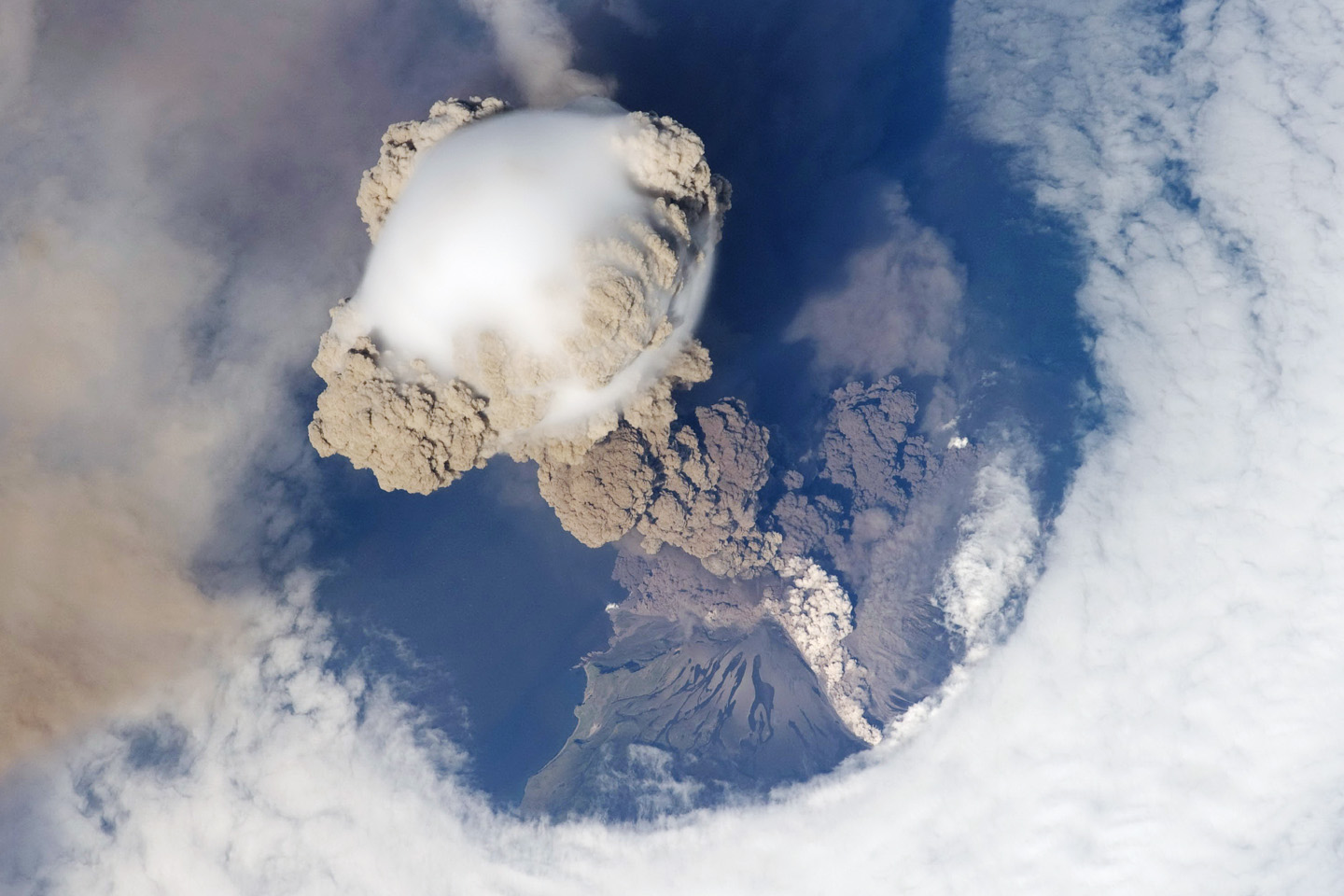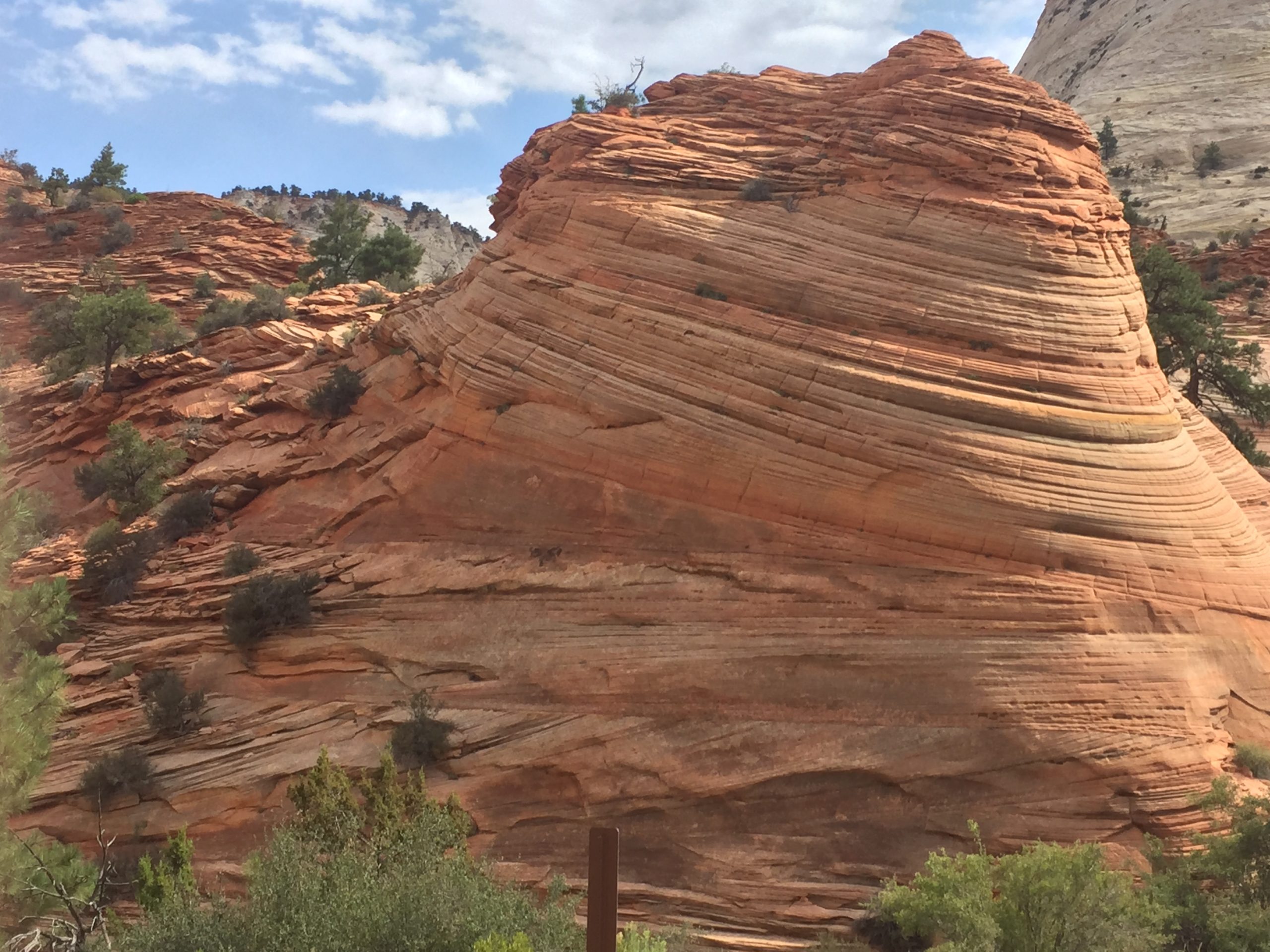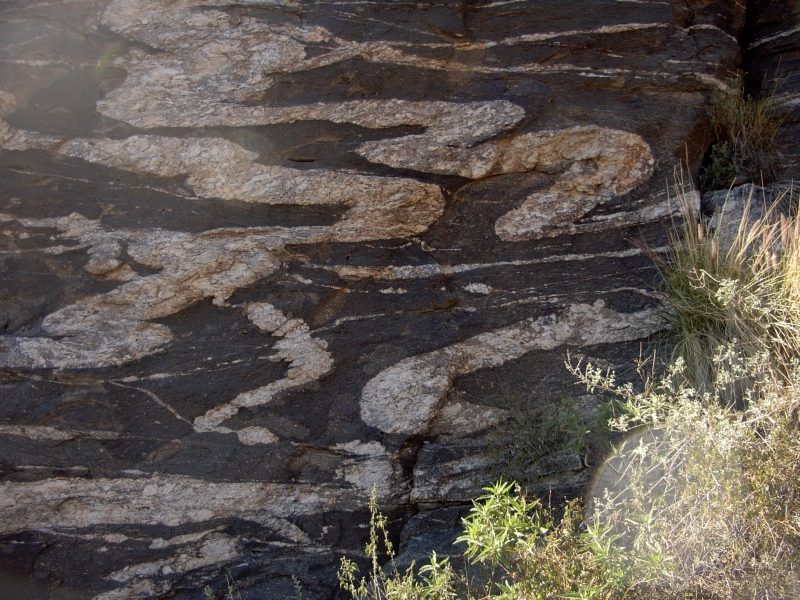The Rock Cycle
Charlene Estrada
The Rock Cycle: Recycle and Reuse
Earth is an efficient recycler of its solid materials through the processes of plate tectonics, in which the rigid oceanic lithosphere will eventually descend into the asthenosphere (mantle), melt, and form again at spreading centers. Another way in which the Earth can rework and recycle its crust is through the Rock Cycle.
Video The rock cycle (3:22).
The Rock Cycle describes how the three main rock types that compose the Earth’s lithosphere are constantly transformed into one another through geologic processes. These three rock types are those we learned about in the previous chapter: igneous, sedimentary, and metamorphic rocks. For now, let’s focus on the process that creates these different rock types.

Igneous rocks: melting, cooling, and crystalizing

Extremely hot rock from the mantle that has melted is called molten rock or magma. It is called lava when magma rises to the crust and erupts from volcanoes at the earth’s surface. Eventually, these molten materials cool and solidify and might grow minerals through crystallization. The solid products from magma, lava, or volcanic activity are called igneous rocks.
Igneous rocks are not only formed from mantle material. Sometimes a sedimentary rock can be buried deep within the crust and come in contact with magma, which causes the molten rock’s composition to change. The same can happen with metamorphic rocks or even preexisting igneous rocks. When ANY type of rock melts, it becomes molten, and it thus has the potential to become an igneous rock.
Sedimentary rocks: Weathering, deposition, and lithification

When any rock is exposed to the Earth’s surface, it will undergo weathering and erosion, which produces sediment. Weathering is the physical and chemical breakdown of rocks into smaller fragments by the atmosphere, hydrosphere, or biosphere. Erosion is the removal of those fragments from their original location. Streams, glaciers, or wind will transport the sediment from the original rock, but it will ultimately accumulate on the earth’s surface due to gravity. This accumulation is called deposition.
The deposited sediments will eventually build in layers and will become buried on the Earth’s surface. As the sediments reach deeper, they eventually become a solid rock through a process called lithification, which requires both compaction and cementation of the loose solids. The weight of the overlying layers will compact the sediment closer together, and as groundwater leaks between the individual grains, it will glue or cement the sediment as solid rock.
In other circumstances, weathering strips rocks of their very elements at an atomic level; these elements later precipitate as new solids in oceans or lakes. Both lithification and precipitation will produce Sedimentary Rocks.
Metamorphic rocks: Burial, deformation, and exhumation

When any type of rock – igneous, sedimentary, or metamorphic – is buried within the earth’s lithosphere, it will reach zones of higher temperatures and/or pressures at depth. The alteration of rock by heat and pressure is called metamorphism.
Rocks will change during metamorphism because the minerals that compose them are only stable under a specific range of temperatures and pressures. Therefore, greater heat and pressure will cause new minerals to grow, and in some rocks, the pressure will squeeze and stretch minerals in patterns of lines or waves called foliation. These transformed and deformed products of heat and pressure are called metamorphic rocks.
Metamorphic rocks do not form at the Earth’s surface as the heat and/or pressures required for metamorphism are found kilometers deep within the lithosphere. But we see metamorphic rock formations on the surface of the Earth. Why is this? Sometimes the deeply buried layers of metamorphic rock are forced toward the light of day by mountain building processes or the sudden weathering and erosion of overlying rocks. This process is called exhumation, which is why we can see a variety of rocks from different periods in Earth’s history!
Written in stone
The Rock Cycle is truly a cycle. There is no single point at which it “begins” or “ends,” and it has been operating for billions of years. There is a natural tendency to think that the rocks on Earth’s surface progress as igneous -> sedimentary -> metamorphic -> igneous, but that is not the case. Any type of rock on Earth’s surface has the potential to become any other type of rock through geologic processes!
For example, a sedimentary rock might be buried deep within the Earth’s surface and melt in contact with a magma plume. The magma and molten sedimentary rock mix and produce a new igneous rock. That igneous rock is buried deep in the crust and becomes warped and deformed; it transforms into a metamorphic rock. Finally, after hundreds of millions of years, the metamorphic rock formation is exhumed and weathered away. The fragments of that metamorphic rock lithify to form a brand new sedimentary rock. What a cycle!
One last thing! The processes involved in the rock cycle, and the rocks themselves, tell a story of the events that happened in Earth’s 4.54 billion-year history. While even the best geologic cannot reconstruct every page of Earth’s story from a single rock formation, they can get a glimpse of what might have happened in a region to form a certain type of rock.
Igneous rock can tell us a story of magma chambers or volcanic activity. Sedimentary rocks tell us where rivers, deserts, beaches, and oceans once resided, and metamorphic rocks help us reconstruct the times when tectonic plates collided or spread apart from one another.
In his poem, Auguries of Innocence, Walt Whitman once wrote:
“To see a World in a Grain of Sand”
What will you see in an entire rock?

